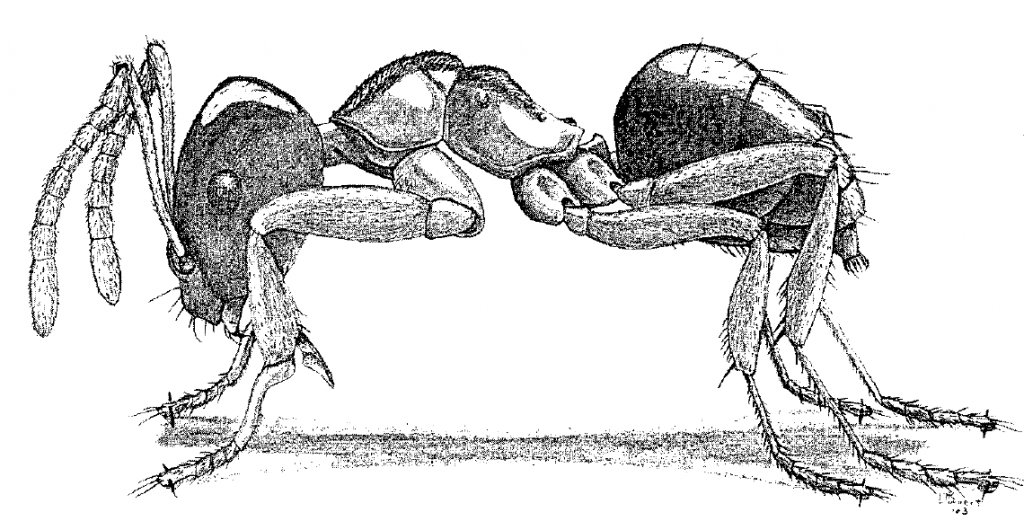
Brachymyrmex depilis
The species name depilis means without hair. These tiny, mostly subterranean ants apparently receive most of their nutrition from honeydew-producing insects on the roots...
Read More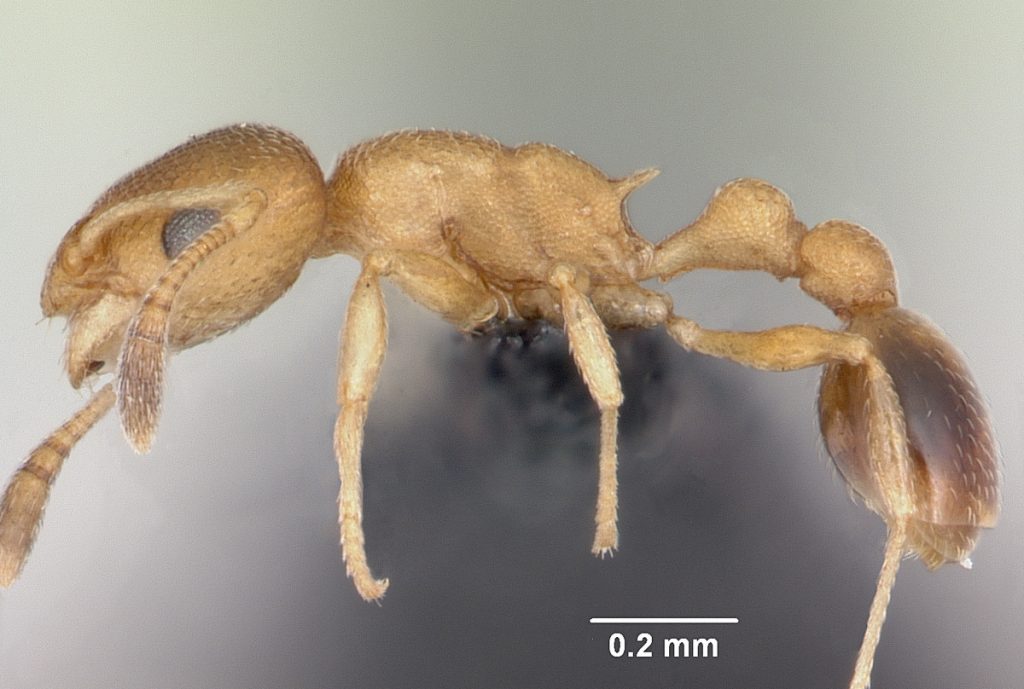
Cardiochondyla obscurior
This is an Old World genus of small, omnivorous ants that contains several cosmopolitan tramp species (Seifert 2003). Whereas most invasive and pest ants...
Read More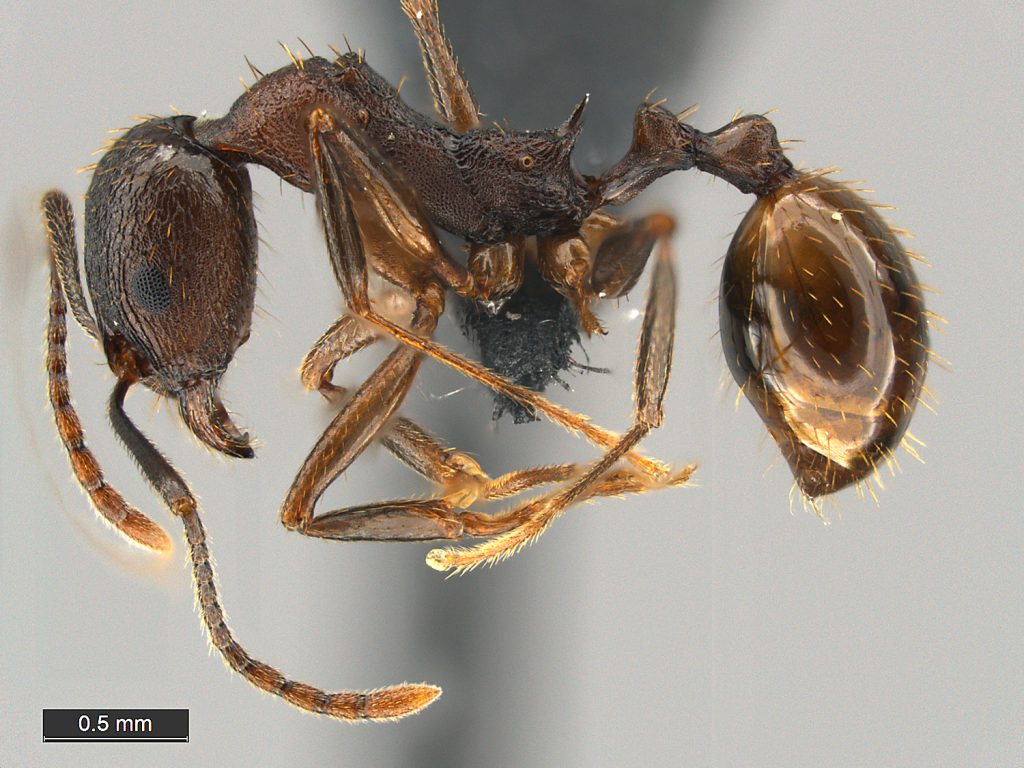
Aphaenogaster fulva
Medium to very dark reddish-brown, mandibles slightly paler, antennae apically and legs apically and basally paler; head with rugoes/reticulate sculpture, alitrunk rugose/puntate, both moderately...
Read More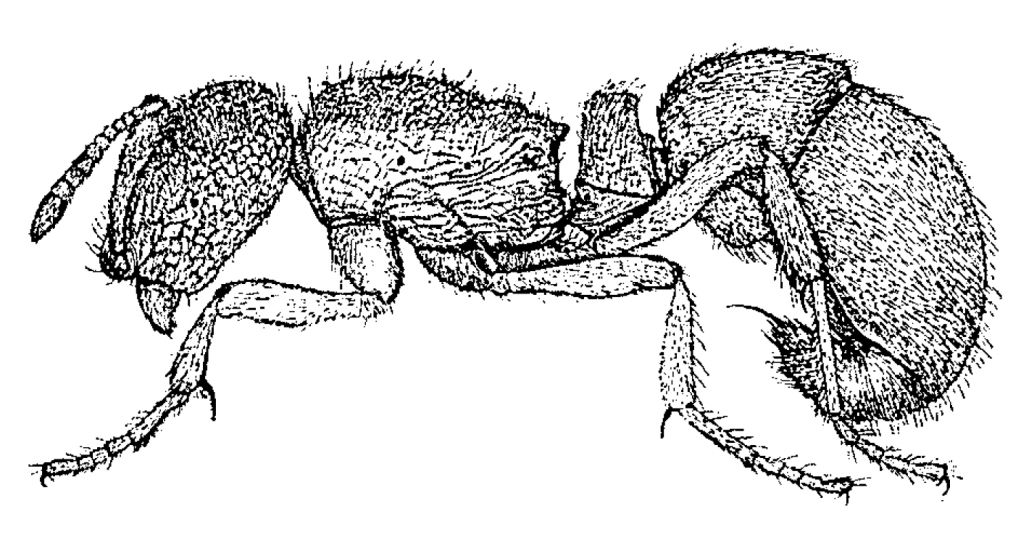
Proceratium croceum
Brownish-orange to reddish-brown, including mandibles and appendages; head and alitrunk coarsely sculptured. Recognized by the shape of the petiolar node and the larger size....
Read More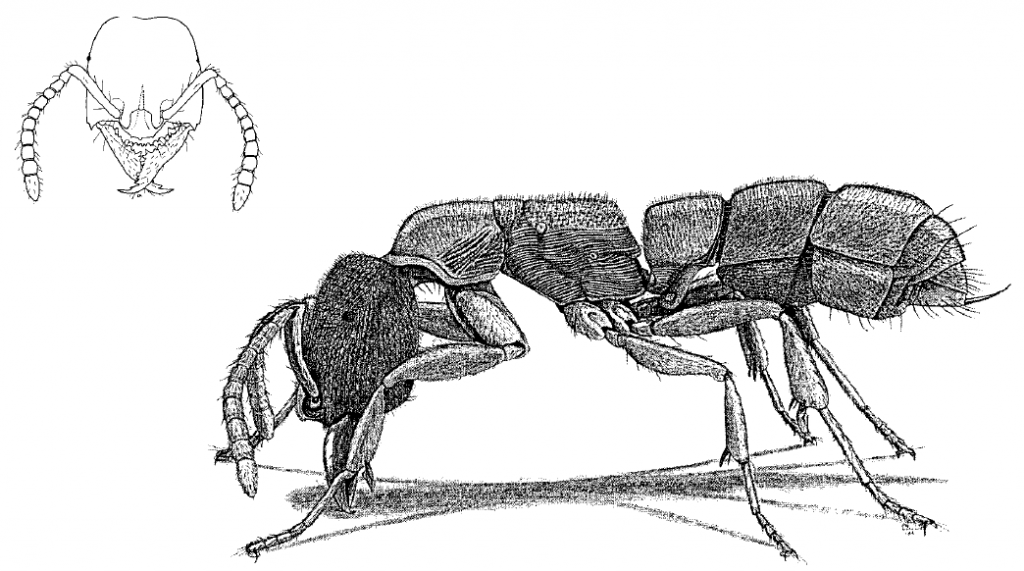
Amblyopone pallipes
A. pallipes is variable, but typically-brown to very dark reddish-brown with mandibles, antennae, and legs yellowish-brown; tenerals (incompletely pigmented adults) common, paler, mottled with...
Read More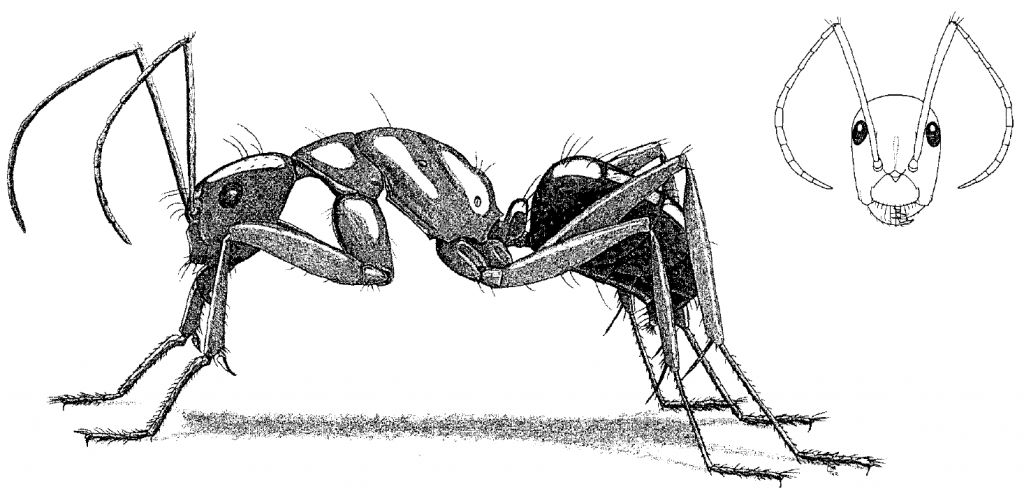
Camponotus castaneus
Pale brownish-yellow to orangish-brown, alitrunk often slightly paler than head and gaster, mandibles usually darker than head, antennae slightly darker, legs concolorous; body with...
Read More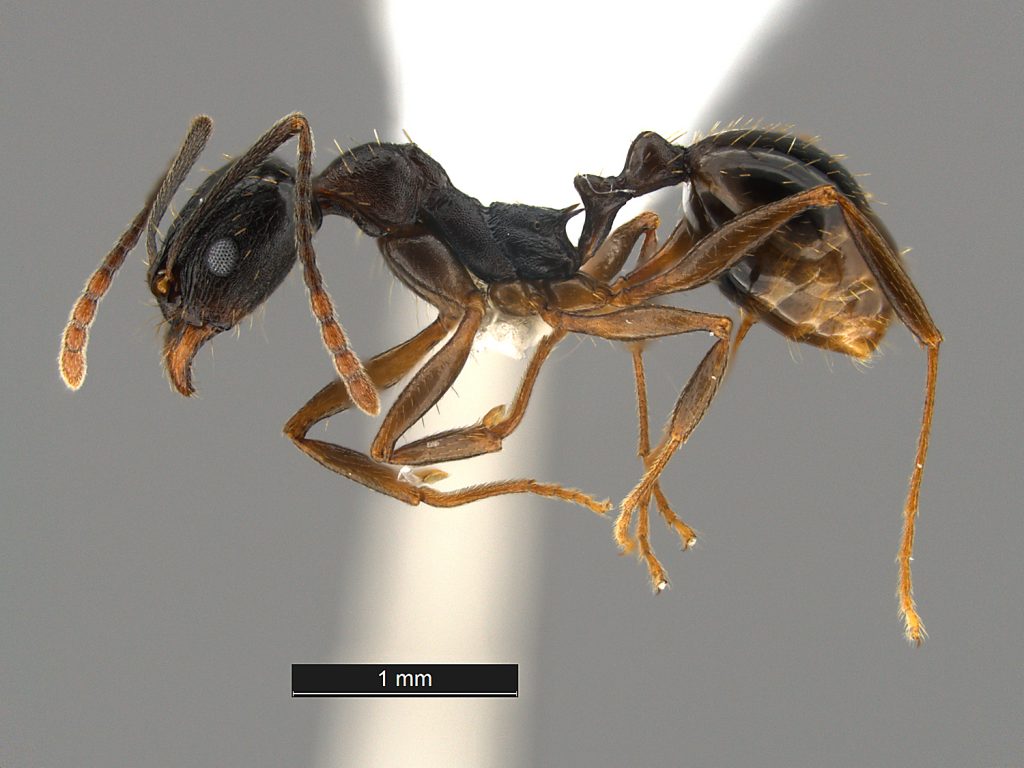
Aphaenogaster picea
Dark reddish-brown to dark blackish-brown, mandibles and apical four segments of antennae slightly paler, legs often distinctly paler (light to dary yellowish-brown but often...
Read More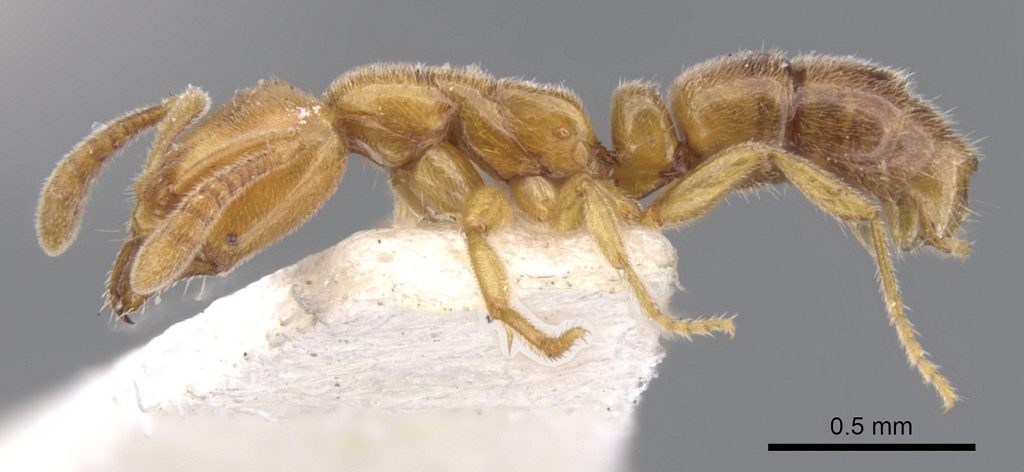
Hypoponera ragusai
Light to medium brownish-yellow; head very finely punctate,glossy. The broader, subrectangular petiolar scale will distinguish this spe­cies from H. opacior and the small size...
Read More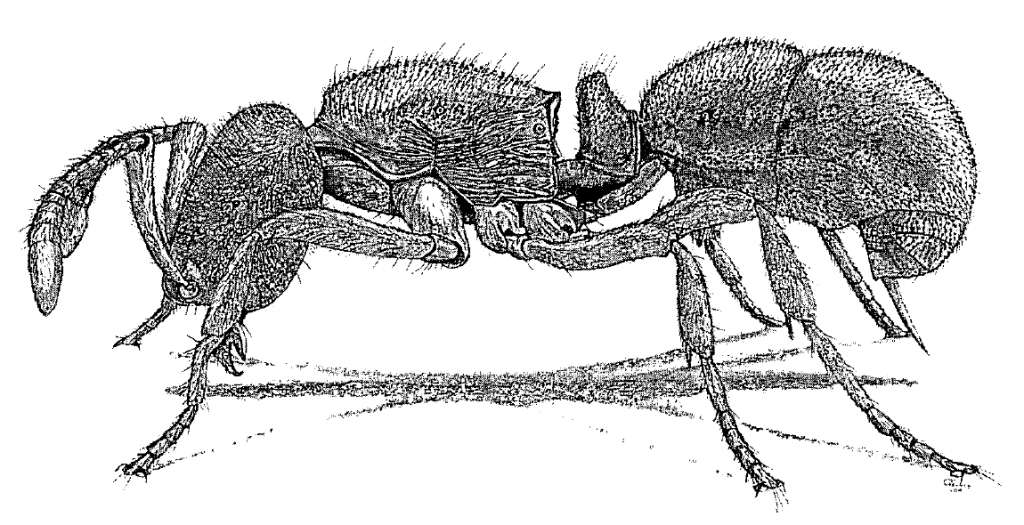
Proceratium silaceum
Orangish to reddish-brown, legs somewhat paler, head and alitrunk distinctly sculptured but surface largely glossy; body finely pubescent. The smaller size and petiole shape...
Read More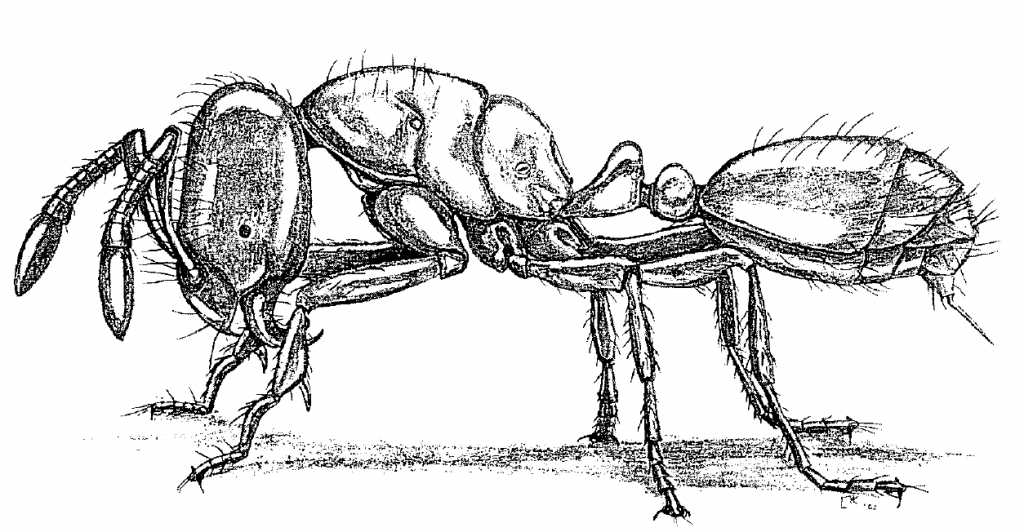
Solenopsis molesta
This is one of Ohio’s smallest species of ants, and our most commonly encounteredSolenopsis. Named the Thief Ant because this diminutive ant often lives...
Read More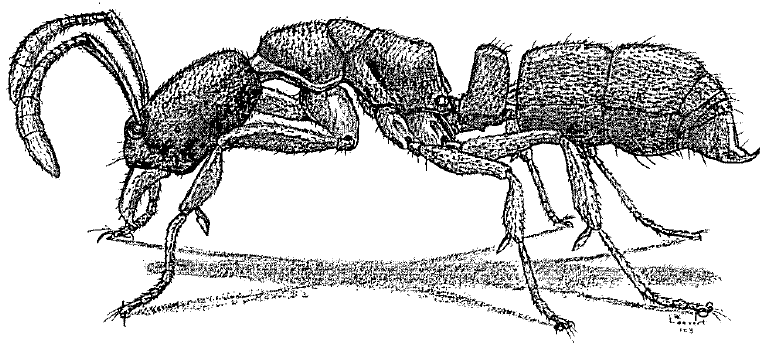
Ponera pennsylvanica
Variable, but typically very dark reddish-brown to nearly black, mandibles, append ages, and the tip of the gaster paler (brownish-yellow to yellowish-brown); head and...
Read More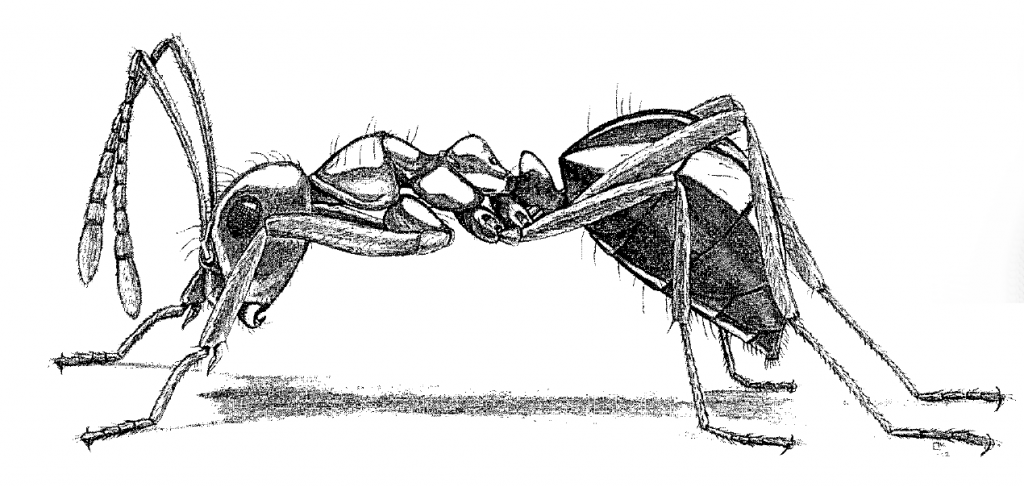
Prenolepis imparis
One of the earliest ants to appear in the spring, it prefers cooler temperatures for foraging than most of our ants. This common species...
Read More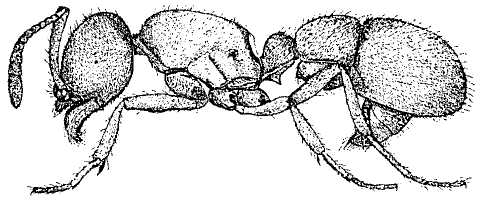
Proceratium pergandei
Reddish-brown, antennae and legs paler, head and alitrunk finely sculptured, surface moderately dull; body finely pubescent. This very distinct species has a low, rounded...
Read More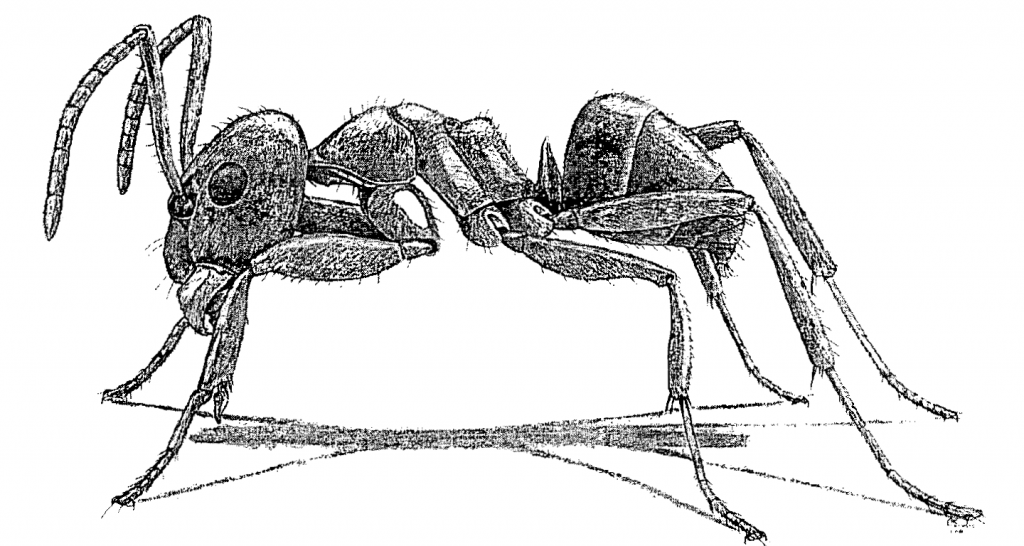
Lasius Neoniger
This is the dominant ant of open lawns and fields in our area, and is replaced in woodlands by L. alienus. It is one of...
Read More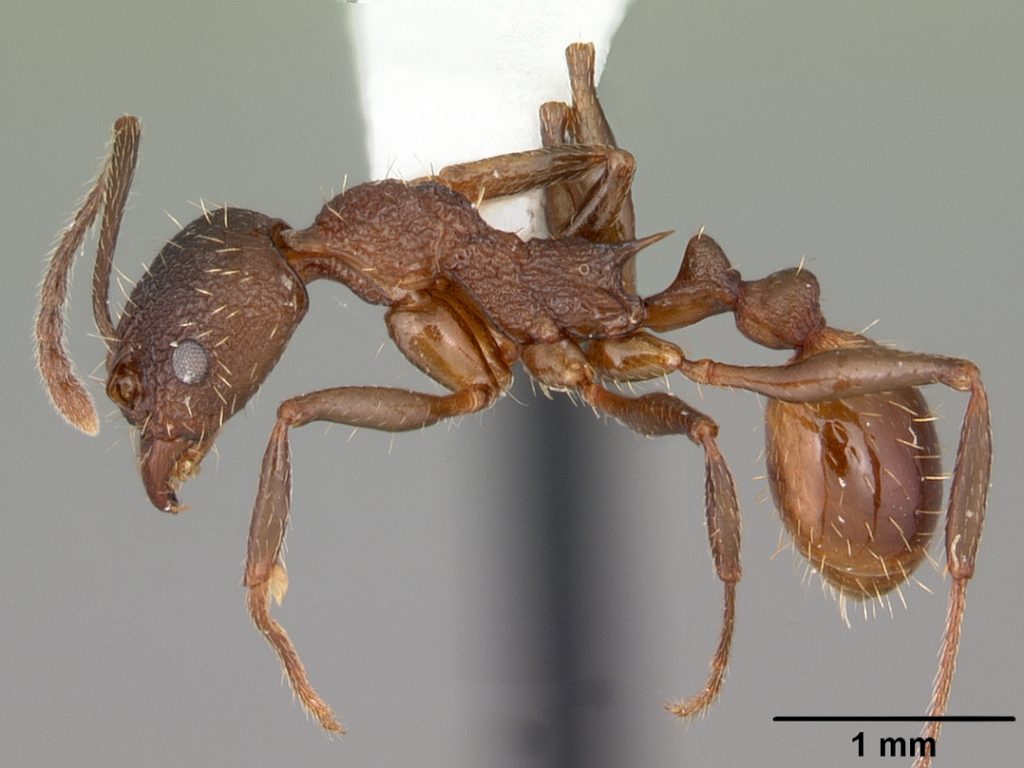
Aphaenogaster mariae
Medium to dark reddish-brown, base of gaster paler, mandibles, antennae apically, coxae, and tarsi slightly to distinctly paler; head and alitrunk with moderately coarse...
Read More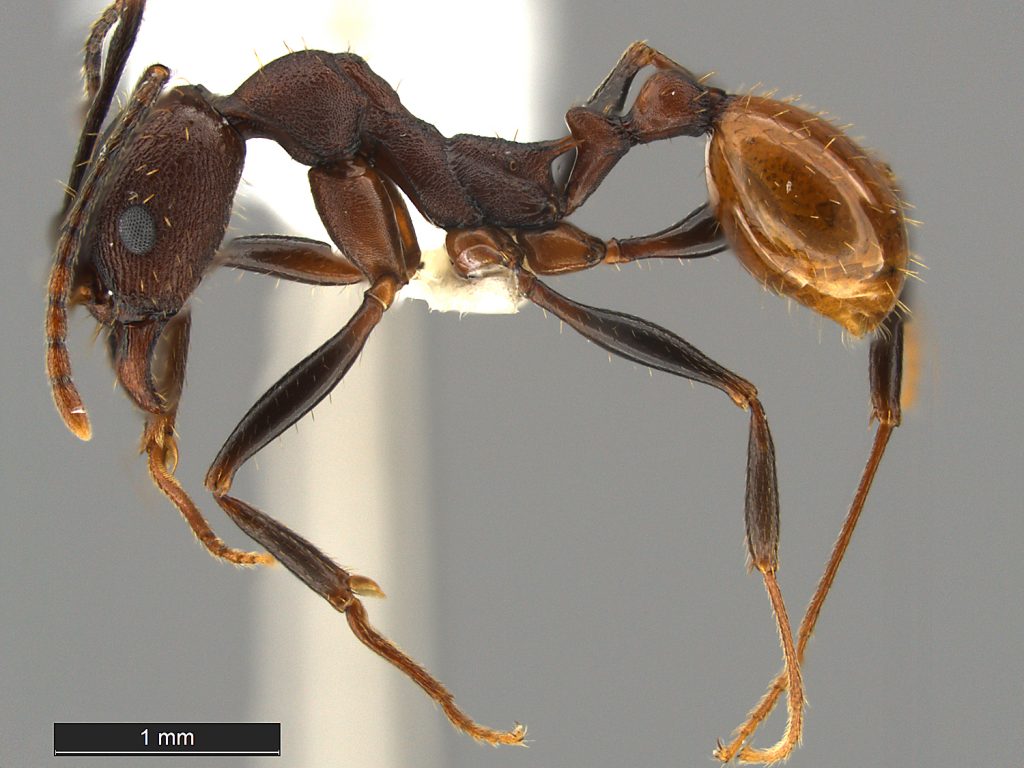
Aphaenogaster lamellidens
Orangish- to reddish-brown, gaster somewhat paler (yellowish-brown), body darker overall in one variety, mandibles and antennal funiculus paler, legs paler basally and apically, especially...
Read More
